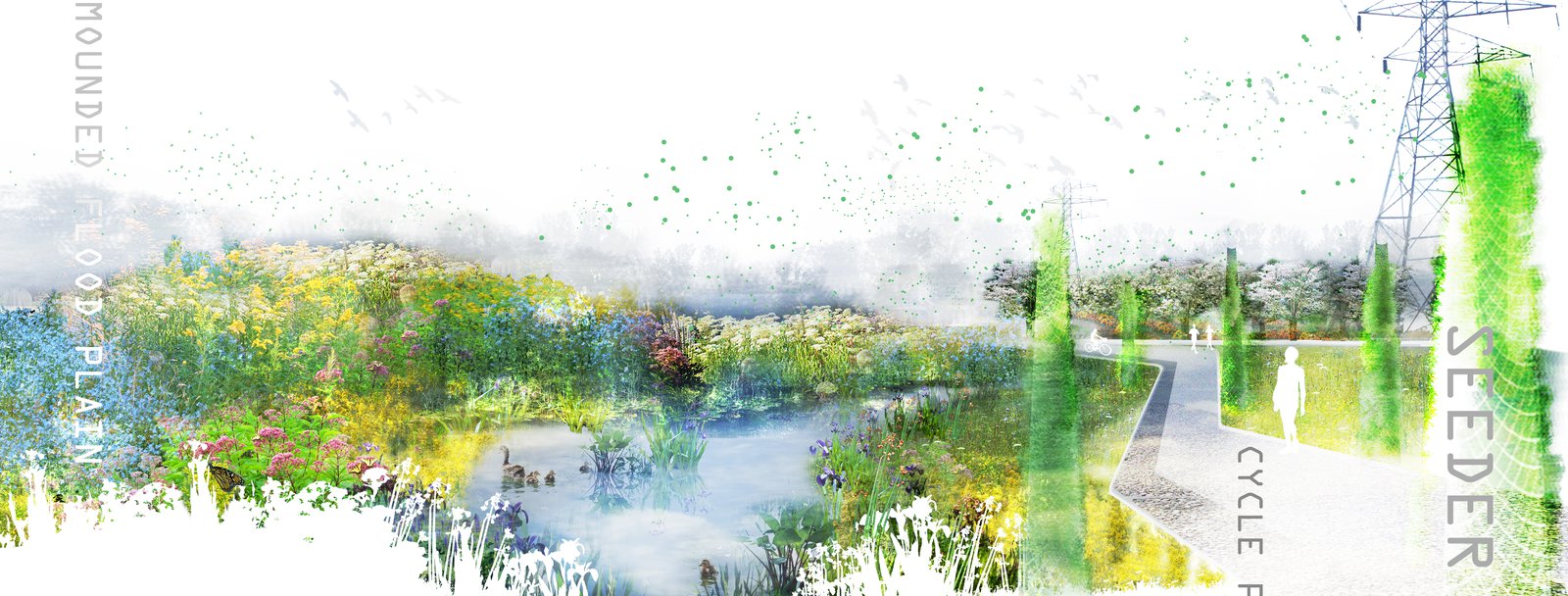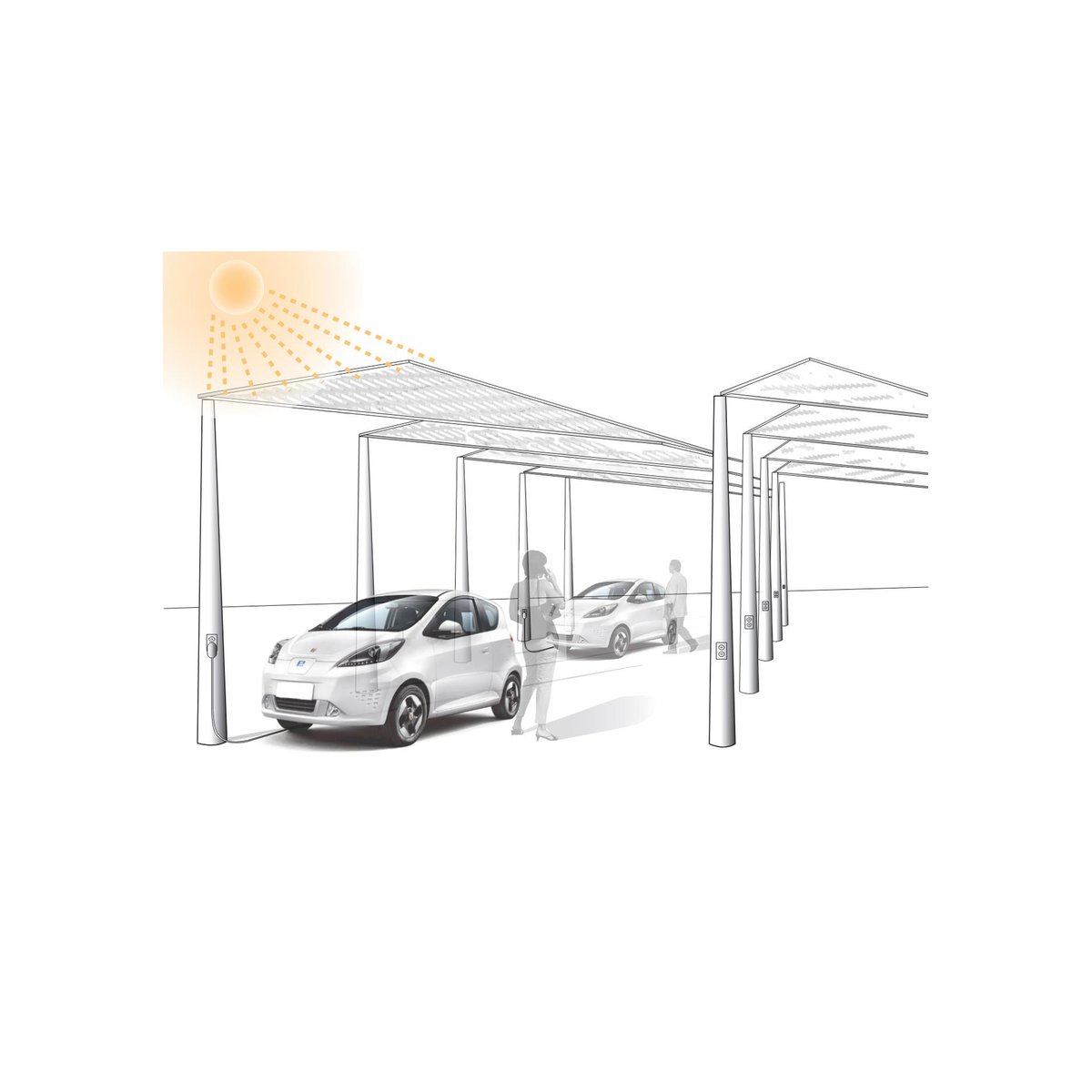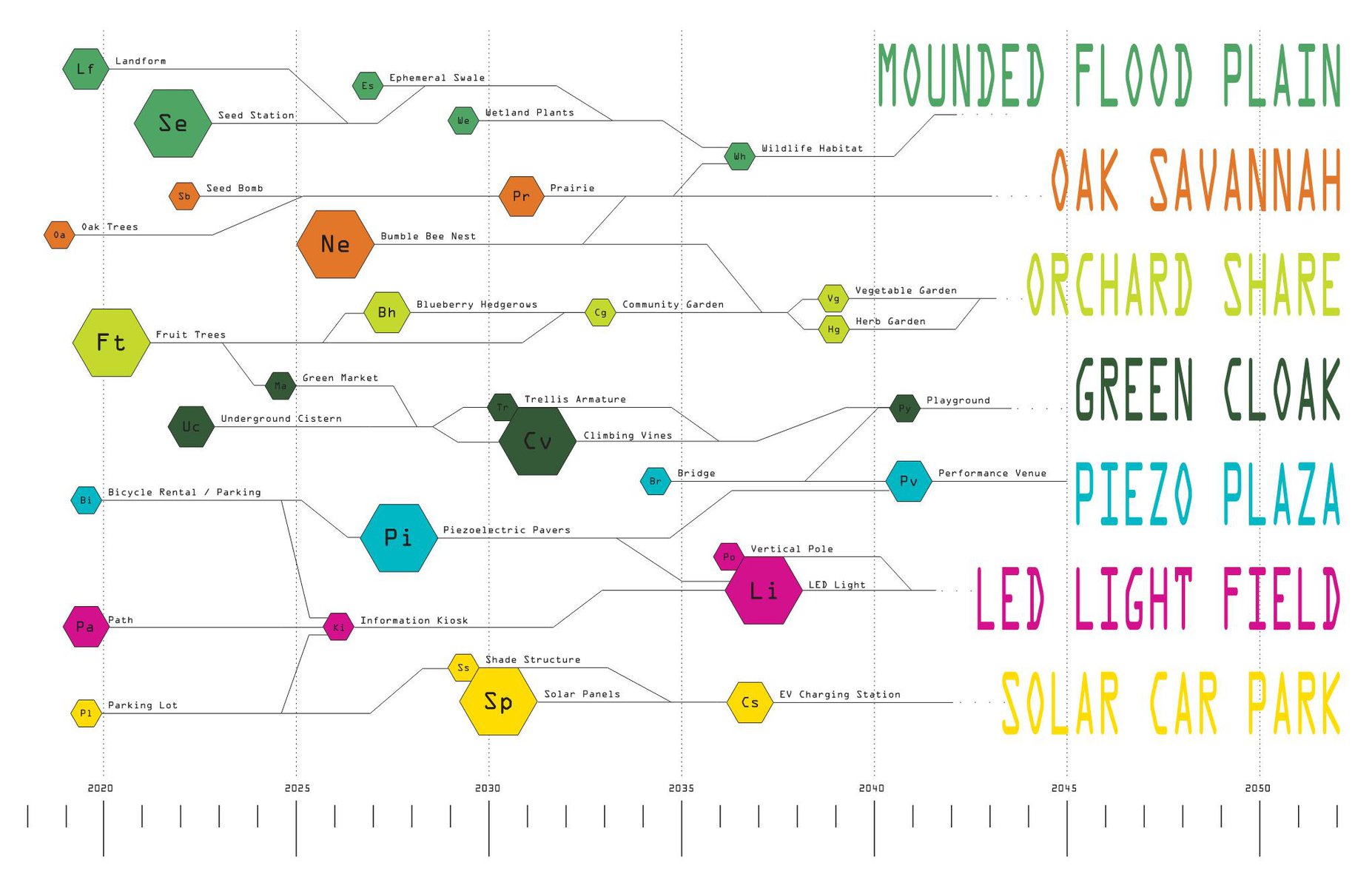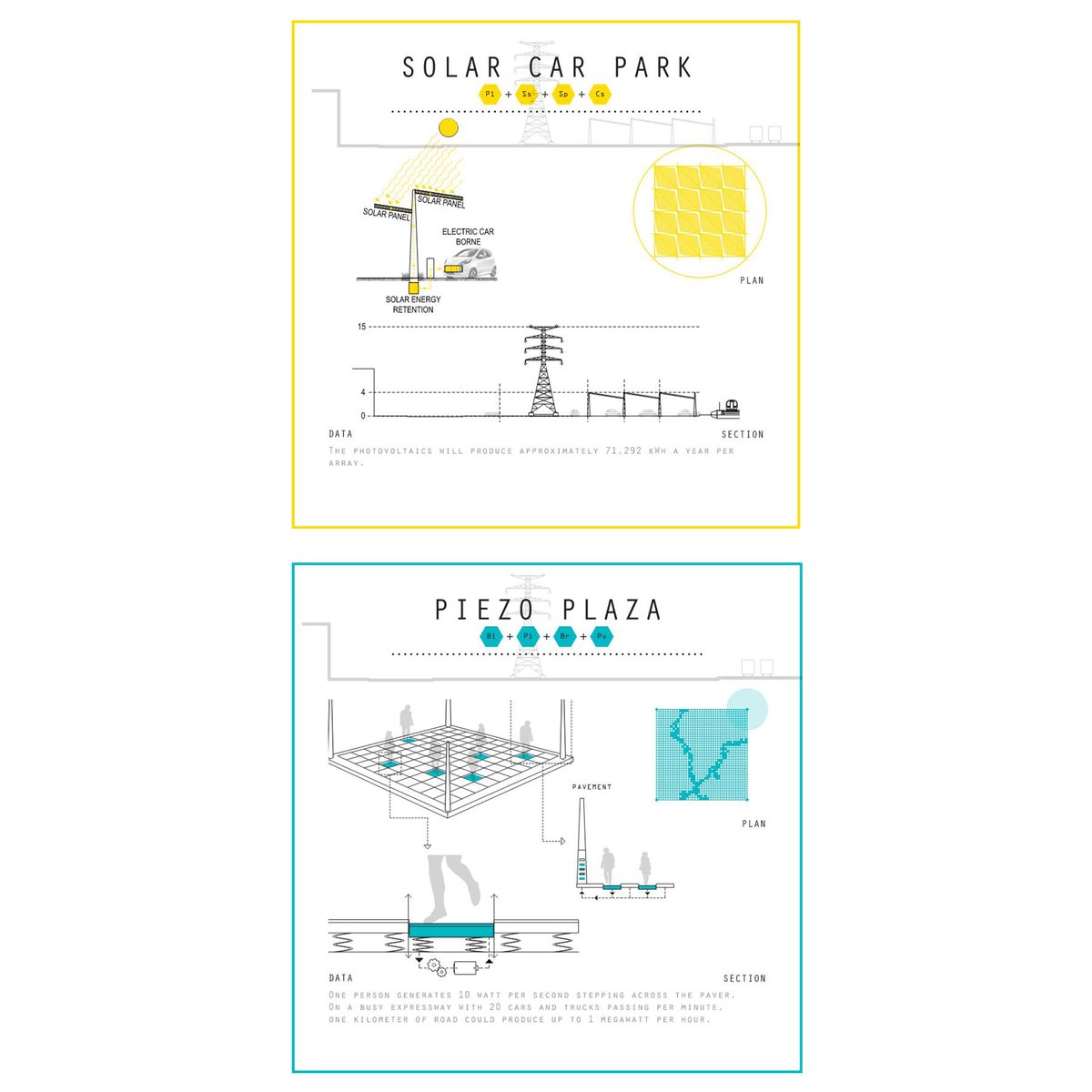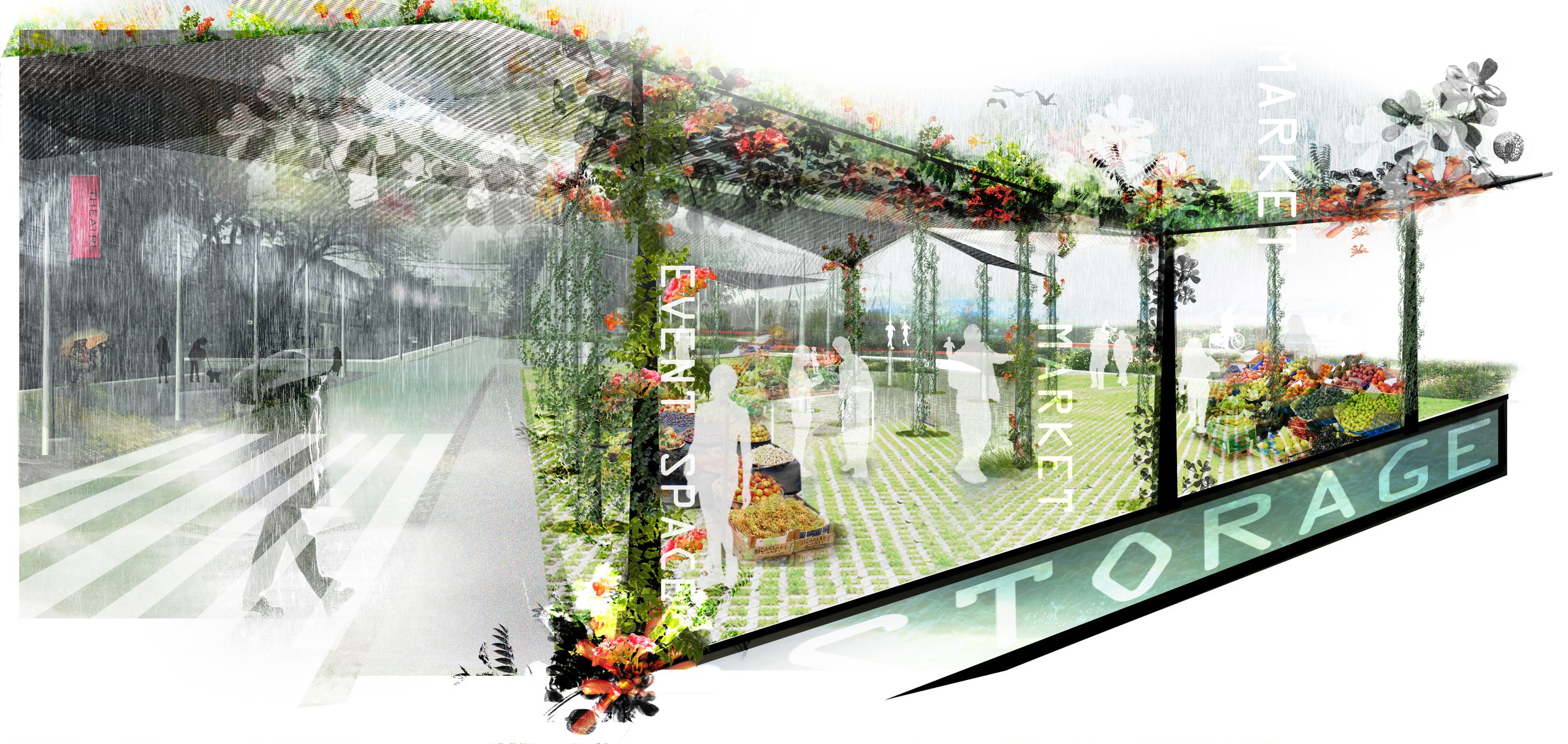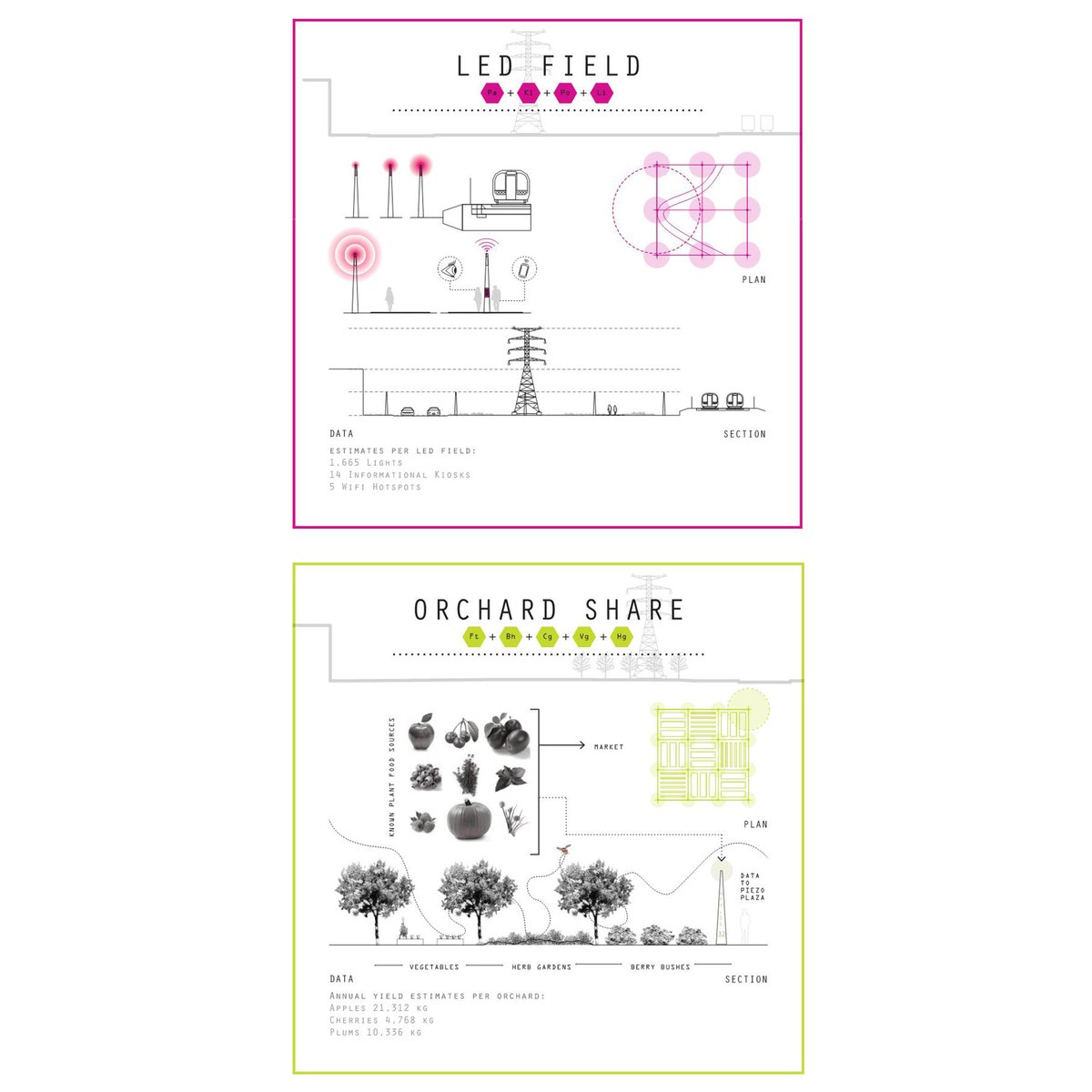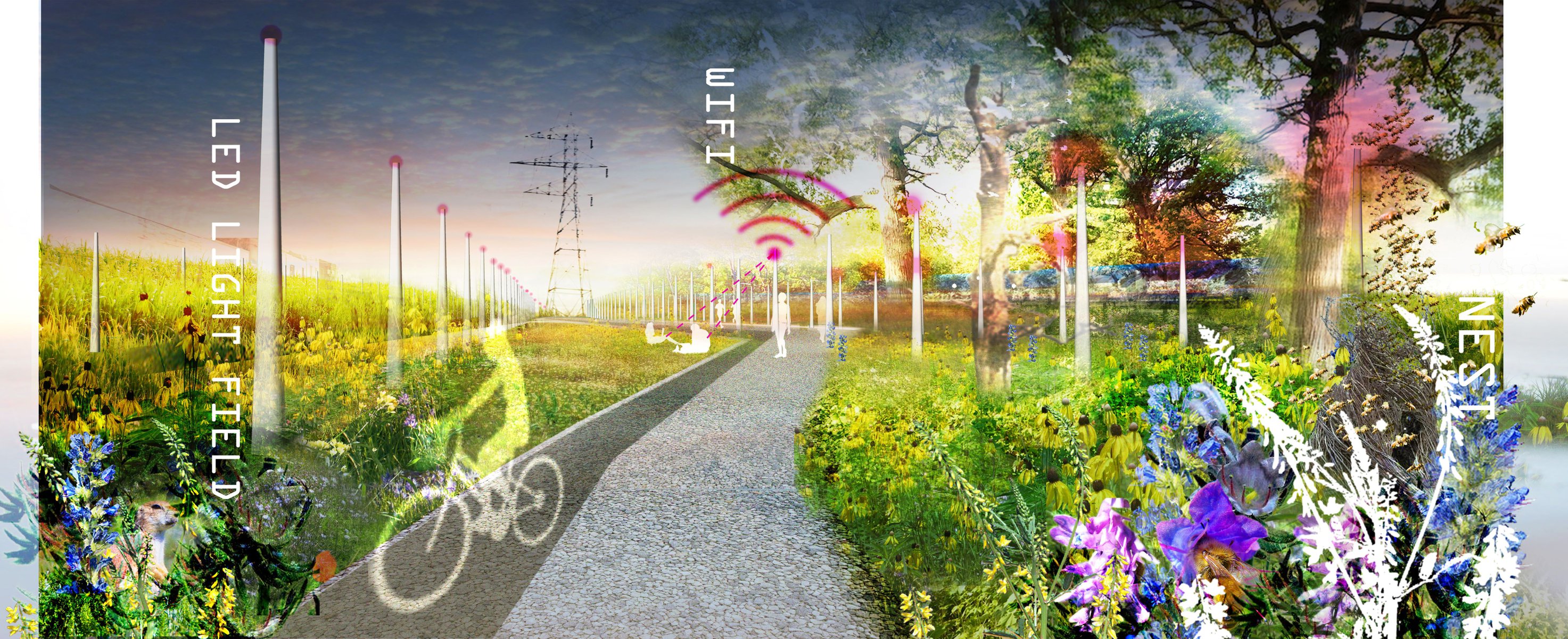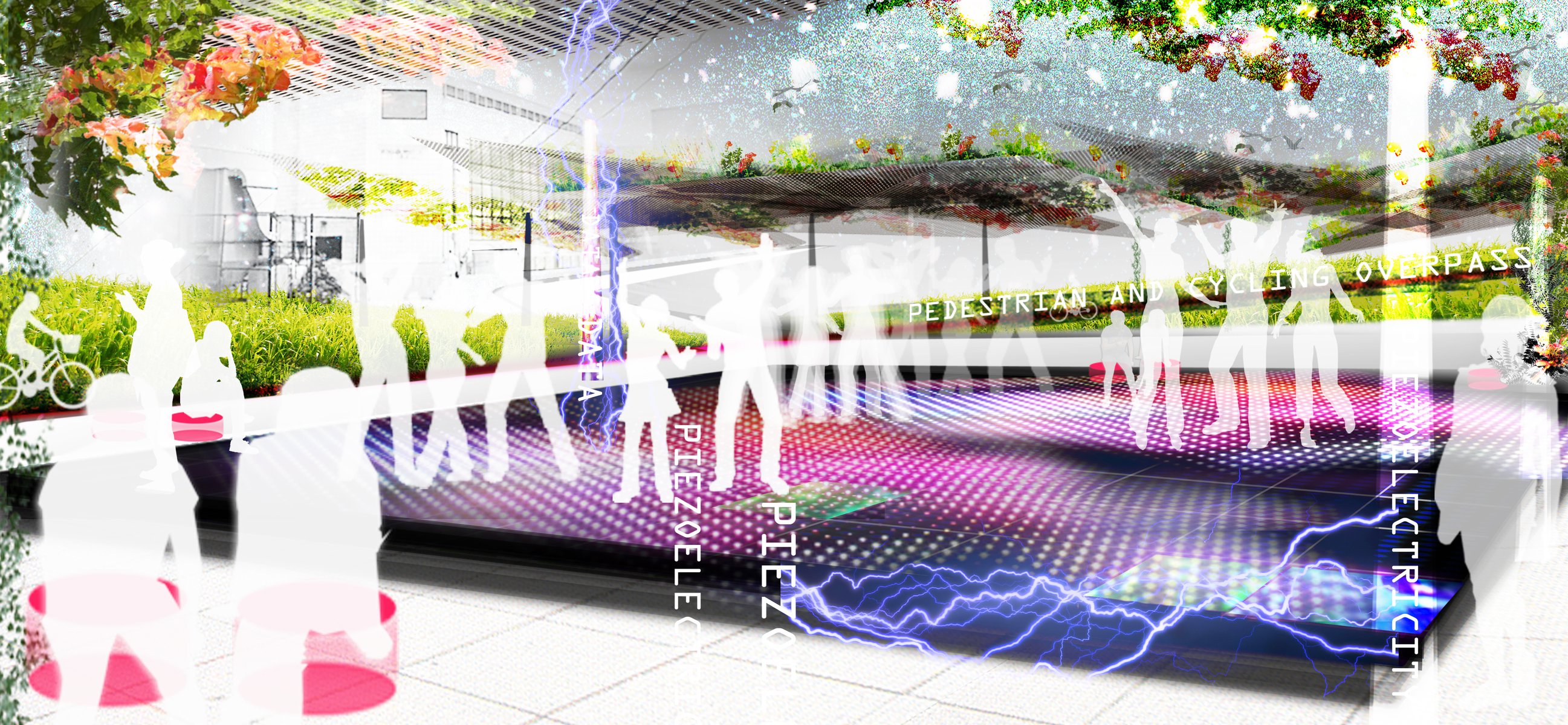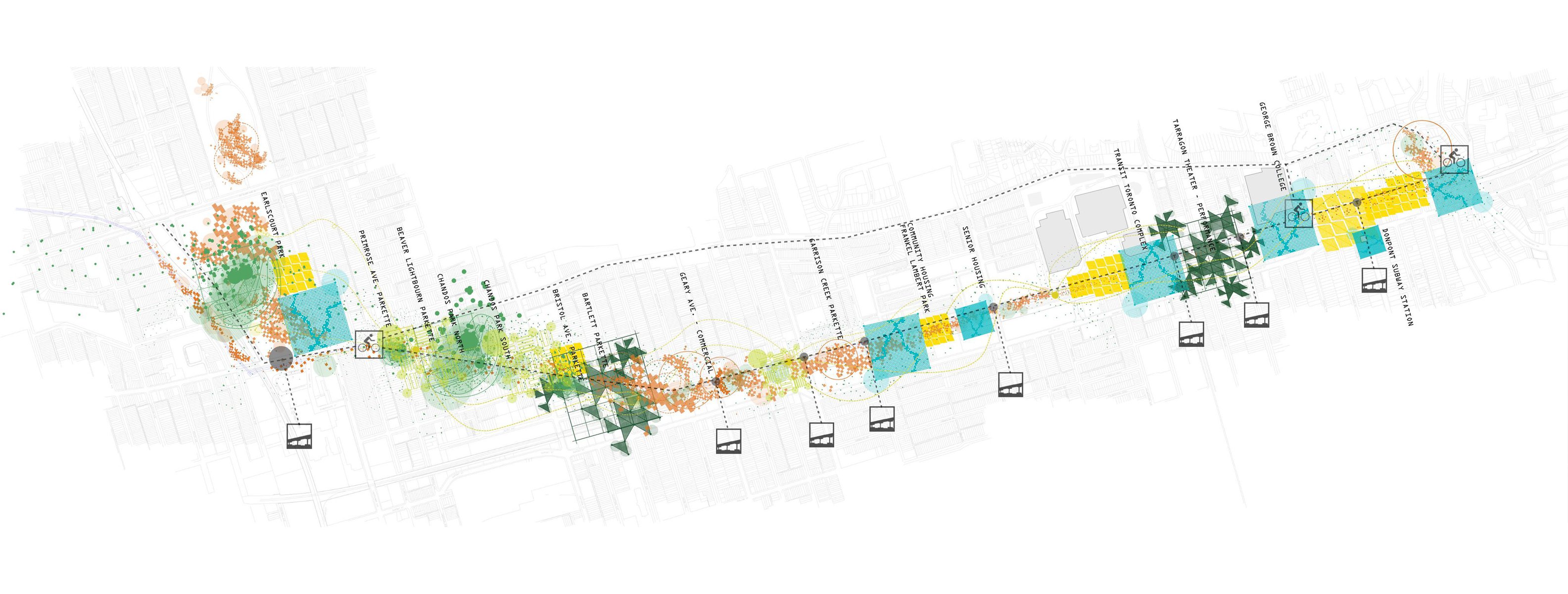Using a system of field and canopy conditions, the design for the park attempts to merge high-tech energy generating infrastructure with low-tech, minimally maintained landscape interventions. Organized on a grid bearing different spatial densities, landscape typologies called “elements” were developed as a flexible system that can adapt to the programmatic adjacencies, diverse constituents and indeterminate future of the park.
To be employed on the site over a 30 year timeline, the park elements include field strategies like mounded flood plains, piezoelectric plazas, and interpretive light fields which adapt and respond to storm events, the movement of park visitors, and the periodic passing of adjacent trains. These elements make the infrastructure demonstrative, educational and part of the visitor’s poetic experience of the park. Transitional oak savannahs, shared orchard gardens, solar canopy car parks, and trellis armatures with green cloaks create a second canopy in the part to mitigate negative effects of the overhead transmission lines and provide a safe, sustainable park future.
Each intervention is coupled with monitoring and data output systems with embed the park with informative text and streaming information. Live-time monitoring and data alert applications marketed to cell phones will be employed to connect the park with visitors.
